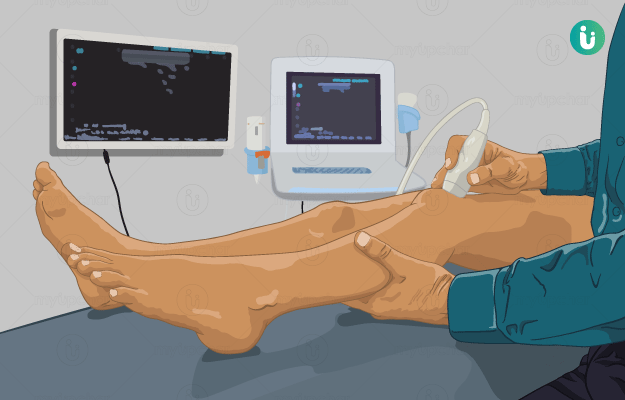What is Colour Doppler ultrasound?
A colour Doppler is a specialised ultrasound that uses high-frequency sound waves for evaluating blood flow through arteries or veins. Also known as Doppler ultrasound, it captures coloured images of blood vessels in various organs to detect abnormalities in vascular flow.
Colour doppler ultrasound also helps diagnose blood clots, function of valves of veins, heart valve defects, blockage of arteries, peripheral artery disease, narrowing of arteries or veins and bulging of arteries.
(Read more: Colour Doppler ultrasound during pregnancy)






























